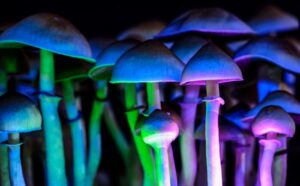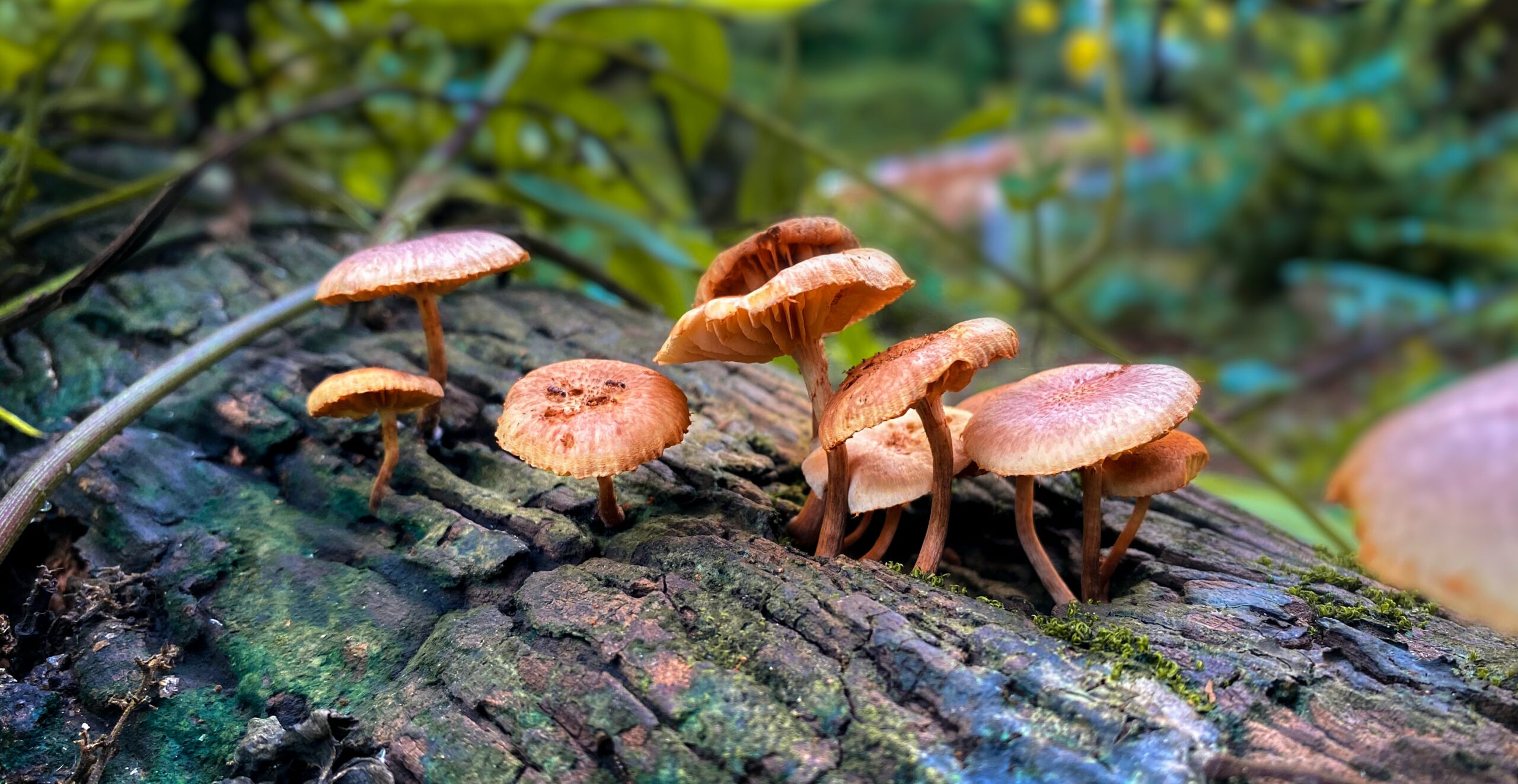Researchers, mental health advocates and writers have extolled the psychological benefits of psychedelics for decades. Substances like psilocybin, they say, are not as mysterious and unpredictable as years of anti-drug legislation and urban folklore have led many to believe (no, it turns out psychedelics have never led someone to try and peel themselves like an orange). In fact, research has shown that psilocybin and its synthetic analogues can help people with terminal illnesses navigate the end of life and aid in the treatment of depressive disorders, as well as in a host of other mental health issues.
Psilocybin — and various psilocybin dosage effects — can be a powerfully emotional experience that allows users and patients to overcome personal obstacles and mental health issues. “After psilocybin, you become more likely to recognize the ego as just one actor in the drama of your mind,” reported the journalist Michael Pollan in an interview with the magazine 032c, on the psychedelic experiences that formed the basis of his 2018 best-seller “How To Change Your Mind.”
“That’s also something that psychotherapy does: it teaches us to acquire some distance from our egos. The difference is, my psilocybin session happened in one afternoon. It didn’t take ten years like psychotherapy.”

Unlocking these benefits requires becoming more familiar with the variety of experiences psilocybin provides. As with all psychedelics, ensuring correct psilocybin dosage is critical. Too little, and the experience may prove underwhelming. Too much, and it may become uncomfortably intense, as a high dose can invoke a powerful emotional reaction and vivid visual distortions. It’s important to know exactly what kind of mushrooms are being consumed (some strains, like the famed “penis envy,” are higher in psilocybin than others, for example) and how much of a psilocybin dose is planned to be ingested.
Different psilocybin dosages provide radically different experiences and effects, so we’ve outlined what one can expect.
Adaptogenic and non-psychedelic mushrooms
Mushrooms have been used medicinally for centuries, and not just to achieve altered states of mind. Non-psychoactive medicinal mushrooms, or adaptogenic mushrooms, include the legendary reishi, which has long been used in traditional Chinese medicine (TCM) and has been shown in studies to have a positive effect on users’ immune systems. And in Japan, turkey tail mushrooms have been used in medical treatments for years.
Because they are non-hallucinogenic, these mushrooms and others like them are easily incorporated into a daily routine, whether used in cooking or as a powdered supplement that can be blended into smoothies or ingested in tablets.
Microdoses (0.50-1.75g)
A small psilocybin dosage that has made big headlines, microdosing refers to regularly ingesting a small amount of psilocybin-containing mushrooms, typically around 0.50-1.75mg. A proper microdose should always be sub-perceptual, meaning no visual distortions or motor impairment.
And while their effects are intentionally subtle, microdosers credit the practice with elevating their mood and energy levels, and may aid with pain relief. Because the experience is only technically psychedelic, microdosing offers individuals a way to experience mushrooms’ cognition-enhancing properties without the fear of too powerful effects.
Museum doses (1.5-2g)
“Museum dose” was coined by the legendary chemist Alexander Shulgin to describe a psychedelic dosage which had noticeable visual and cognitive effects, but left users functional and energized enough to enjoy the pleasures of daily life (taking in a local art museum, for example).
In the case of psilocybin, this is typically more than a microdose, but almost always under two grams. Visuals on a museum dose tend to be enhancing rather than disruptive, and users report that they can enhance their perception of art, music and nature. Emotions may be heightened and thoughts may become more introspective and euphoric, but it is unlikely to experience any reality-breaking revelations at this dosage.
Moderate doses (2-4g)
When most people think of psilocybin dosage, they’re likely imagining something approximately in this range. Visual distortions become stronger, and many users report seeing kaleidoscopic plays of color and fractal patterns that heavily alter the appearance of their surroundings.
Depth perception and balance may be affected, so unlike a museum dose it’s generally advisable to find a comfortable home base to enjoy the experience without any demands on time. Emotions are amplified, and some might find themselves discovering new perspectives on familiar problems. Because experiences at this dosage can be more intense, many users will take the time to set their intentions beforehand and may even be accompanied by a trip sitter.
Heroic doses (5g+)
Famed psychedelic researcher, writer and raconteur Terence McKenna popularized the heroic dose as a sort of final frontier for aspiring psychonauts — a high enough concentration of psilocybin to cause intense hallucinations and a complete loss of connection with reality. The scientist and author Sam Harris described his experience on a heroic dose as being “hurled into the sun, so blinding in its beauty and intensity that it shatters your mind.”
Some users credit the experience with providing spiritual and personal epiphanies, and there is research indicating that a single high dose of psilocybin can alter brain function for up to a month afterward.
There is no singular kind of experience, and factors like psilocybin dosage level, the variety of available mushroom strains and personal temperament play an enormous role in how we experience psychedelics.
But understanding how these substances can make us feel at different intensities helps demystify them and allay our anxieties about their therapeutic use — as long as they’re treated like the versatile and complex tool that they are.


